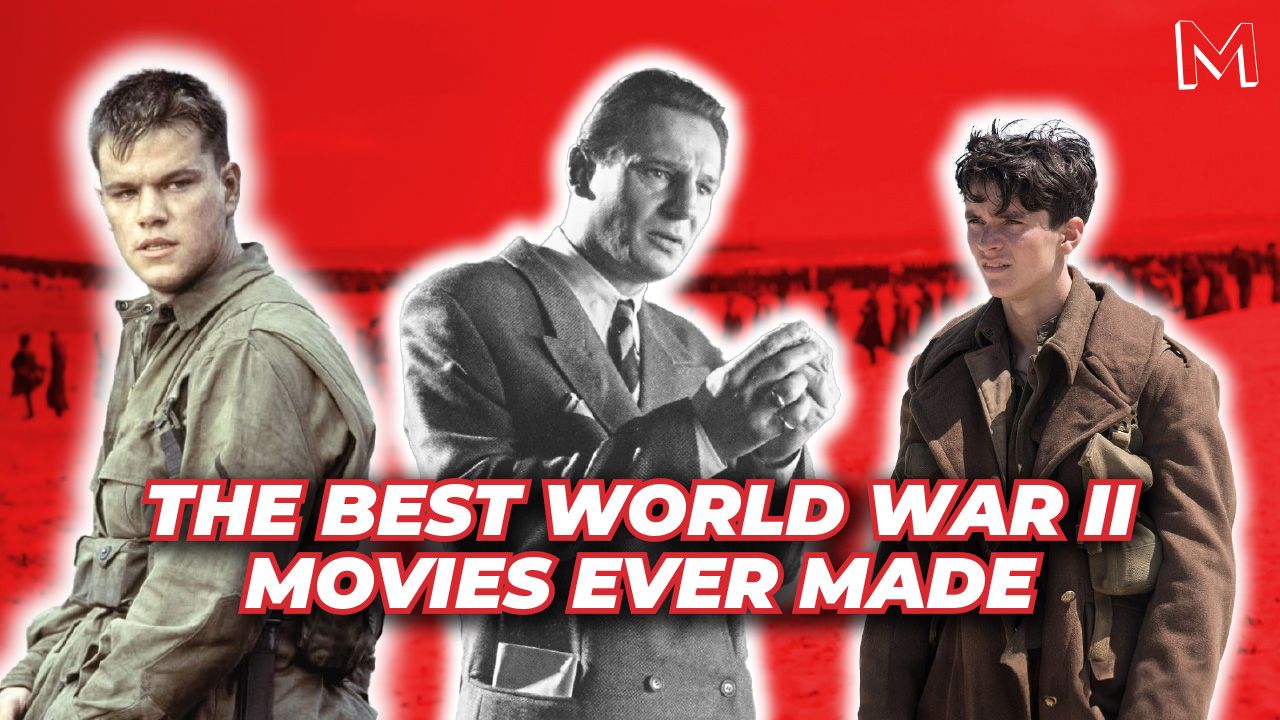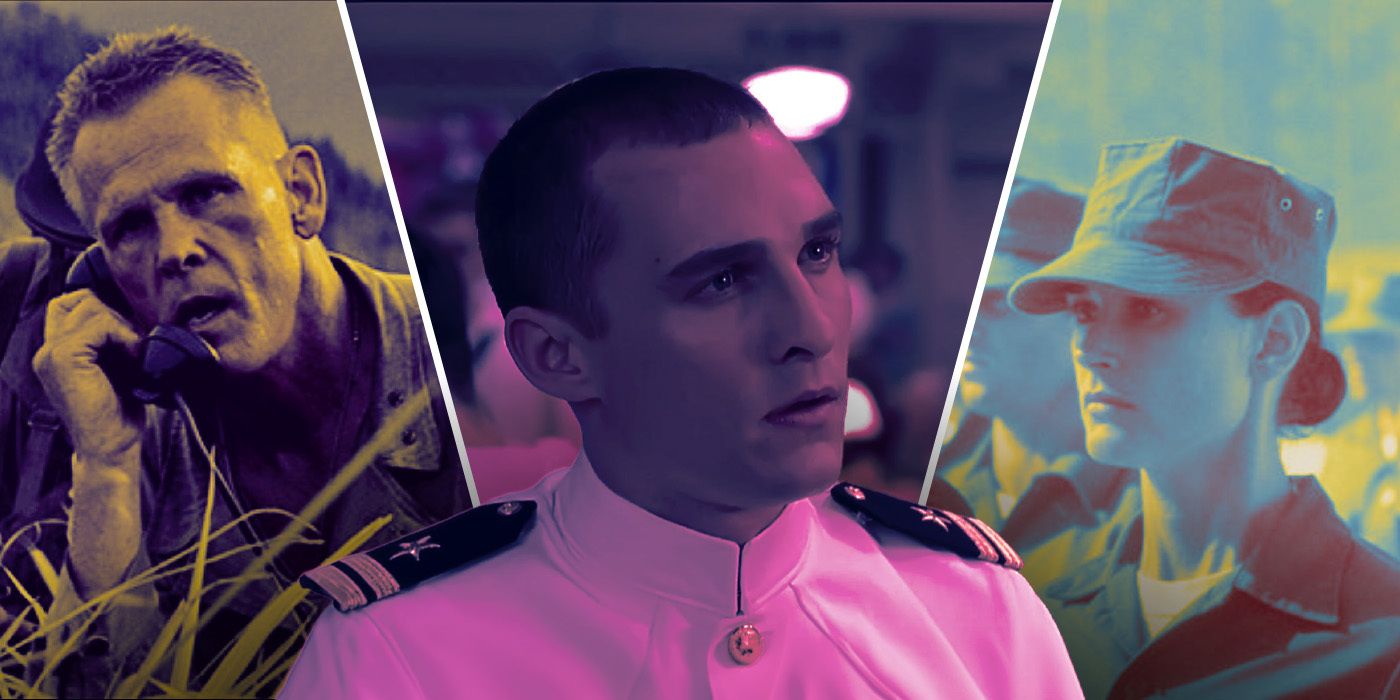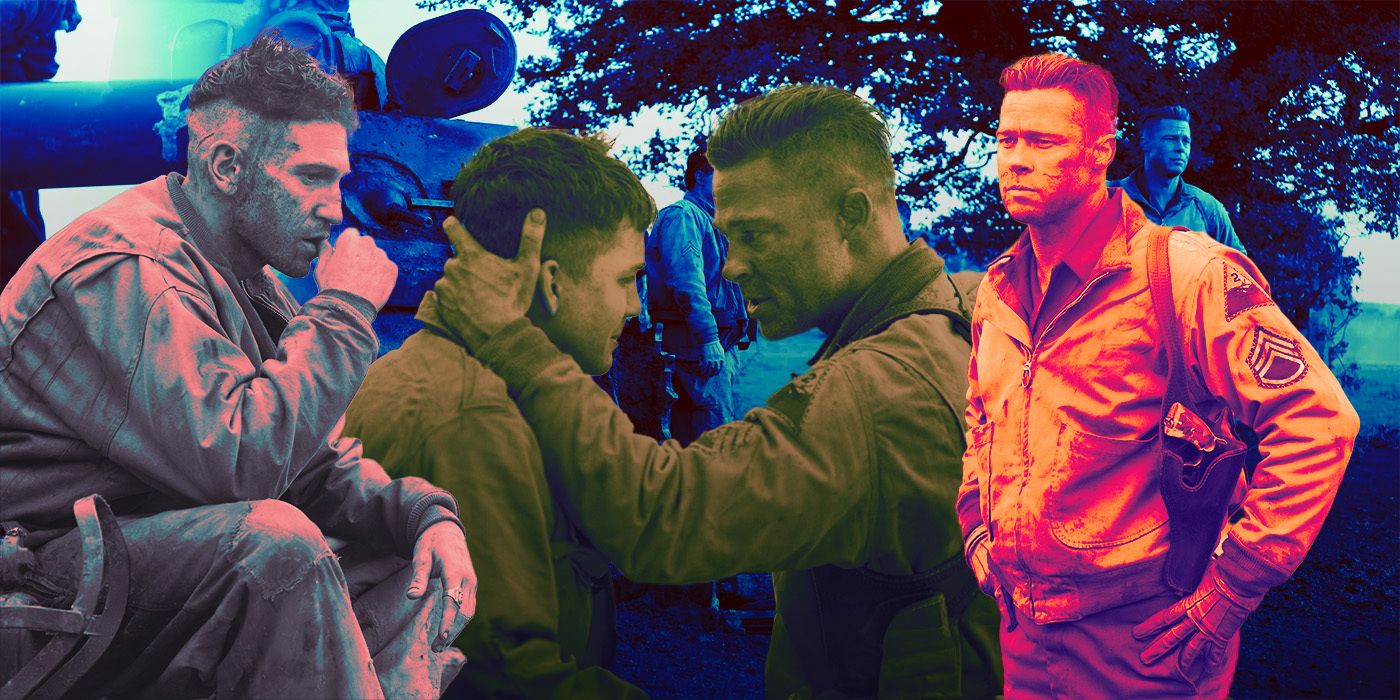Summary
- Fury is a fictional narrative inspired by real WWII tank crews, paying homage to their untold stories and experiences.
- David Ayer’s commitment to authenticity shines through in Fury, with detailed sets and real WWII veterans influencing the film.
- The psychology of a tank crew during WWII is explored in Fury, with actors undergoing intense training to bond and immerse themselves in their roles.
Before going on to direct the first iteration of the DCU’s Suicide Squad — and mercilessly slate it online following its poor reception — director David Ayer brought together an all-star cast of against-the-grain soldiers on a life-threatening mission that can only end in peril, sounds surprisingly familiar. 2014’s Fury saw Brad Pitt portray Don ‘Wardaddy’ Collier, a US Army Staff Sergeant in charge of the Sherman Tank ‘Fury’. Alongside Pitt, Fury also stars Shia LaBeouf (Peanut Butter Falcon), Logan Lerman (The Perks of Being a Wallflower), Michael Peña (Ant-Man), and Jon Bernthal (The Punisher) as his trusted tank crew.
Fury provides audiences with an intimate look at a World War II tank crew, an often unseen aspect of combat during the Second World War. The film was praised for its dedication to realism in its depiction of armored combat and the cohesiveness of a tank crew during the war. With its high attention to detail, it has led many to wonder if the story of Wardaddy’s tank crew is based on a true story, or if it’s completely made up.
Fury Is Inspired by Real Tank Crews from WWII
Fury
- Release Date
- October 15, 2014
- Runtime
- 134
Fury isn’t directly based on any true stories. However, it creates a fictional narrative around the very real accounts of WWII tank crews. Ayer’s grandparents and his uncle served in the Second World War. In an interview with the BFI (British Film Institute), Ayer said, “They all came from the generation that didn’t talk about their experiences.” This led Ayer to develop Fury as a method of exploring those untapped experiences and emotions. In the process of bringing his grandparents’ experiences to life, Ayer drew direct influences from several sources and real-life figures from the war.
Leading the tank crew is Pitt’s ‘Wardaddy,’ who was heavily inspired by the real life American tank commander Lafayette G. “War Daddy” Pool. Pool was a revered tank commander during the later stages of the Second World War. With the moniker “in the mood” sprayed on his tank’s barrel, Pool reportedly destroyed over 250 enemy vehicles during his service period, earning him the nickname “War Daddy” in the process. Much like the crew in Fury, Pool was deployed shortly after the D-Day landings on June 6, 1944. As well as being a ‘tank ace,’ Pool reportedly also went blow for blow with famous heavyweight boxer Joe Louis, when the heavyweight champion toured England to boost troop morale.
7:08


Best World War II Movies Ever Made, Ranked
For decades, filmmakers have tackled the sensitive and emotionally-driven theme of World War II in an array of noteworthy and poignant pictures.
Fury also draws narrative inspiration from a famous WWII memoir, Death Traps, written by WWII tank veteran Belton Y. Cooper. The memoir told the story of a single American tank operator forced to hold off a company of German soldiers overnight until reinforcements came the following morning. This account influenced the film’s climactic final battle, where the crew is forced to make a final stand against the Germans after their tank breaks down.
The suspenseful final moment, which sees Logan Lerman’s ‘Norman’ discovered by a single German soldier, who mercifully keeps his position a secret, is also inspired by true moments of pacifism from the latter half of the Second World War. After nearly 5 years of fighting, many of the soldiers were exhausted and done with the war, leading to such moments where small groups of opposing soldiers would face each other, but refuse to fight and simply turn away.
David Ayer Was Obsessed With the Psychology of a Tank Crew
David Ayer’s exploration of his grandparents’ experiences led to a fascination with the psychology of a real tank crew during the Second World War. To prepare his cast for their roles, he had them undergo a ‘boot camp’ designed by real Navy SEALs. The camp was designed to bring the actors closer to the psyches of their characters, let them bond as a team, and become fluent in the workings of their tank, an M4A2E8 Sherman.
A further part of the boot camp involved the actors having multiple conversations and dinners with real WWII tank veterans. One such meeting saw Ayer invite a D-Day veteran to the set of Fury, in Hertfordshire, England. Peter Comfort was the last surviving veteran of a WWII Sherman tank regiment. Hilariously, during the meeting, the veteran admitted he had to use Google to learn who Brad Pitt actually was.


20 Underrated War Movies That Flopped at the Box Office
From bleak character studies to sweeping epics, here are 20 underrated war movies that were not commercial hits but are definitely worth your time!
Ayer was committed to authenticity on the shoot of Fury. The set was comprised of ten working M4 Sherman tanks, alongside the last surviving operational Tiger tank — used by the Germans. Ayer also wanted to ensure every detail of the tank, from its equipment to the crew’s uniform was correct and authentic. During the same BFI interview, Ayer said:
“My visual research really came from photographs – thousands of them… and I’d just sit there with a magnifying glass.”
Almost a decade after its initial release, David Ayer’s Fury still stands as one of the best modern visualizations of the Second World War. The British newspaper, The Guardian, spoke to a surviving D-Day Veteran about the depictions of the war in the movie, with the veteran stating how the film brought up memories from his own experiences operating a Sherman tank during the war.
This story originally appeared on Movieweb

